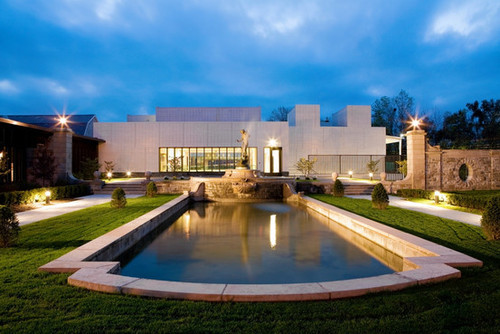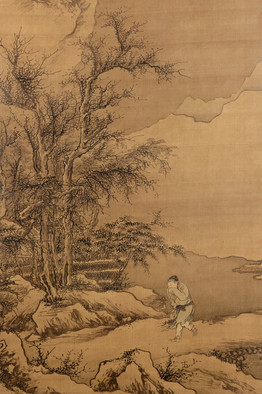
APOLOGIES to Milan and Tokyo. Regrets to Stockholm and Paris. Forgive me, Eindhoven, Berlin, Barcelona and, most particularly, New York. But London is the design capital of the world.
Ounce for ounce, bloke for bloke, Britain produces better designers and design impresarios than anywhere else. They build retail emporiums, as Sir Terence Conran did. Or revolutionize household appliances, like Sir James Dyson has done. Or dream up impeccable furniture, as Jasper Morrison has. Or construct toasters from scratch by smelting their own ore and cooking their own plastic, like Thomas Thwaites did, a feat he undertook for his 2009 thesis project at the Royal College of Art.
And if the London Design Festival, a 10-day program of some 200 events, including exhibitions and studio tours, which ended on Sunday, failed to express the full radiance of contemporary British design, blame it on growing pains. Having just marked its 10th year, the festival is poised between being a regional showcase bubbling with spontaneous interventions and a smooth international canvas.
Once a satellite (or several of them) swirling around an annual trade show called 100% Design, the festival now extends from Ladbroke Grove in West London to Hackney in the east. You need an hour on the tube simply to travel its breadth.
Yet despite the scale, and the presence of more than 300,000 visitors, the London Design Festival is apparently still too small for many members of the British design elite.
To be sure, celebrities like Mr. Morrison and Sir Terence were visible. As were Tom Dixon, who organized a group of international design exhibitions near his canal-side studio at Portobello Dock, and Thomas Heatherwick, who had a popular one-man show at the Victoria and Albert Museum. (Mr. Heatherwick may be best known for designing the caldron for the 2012 Olympic Games, a rosette of 204 copper flambeaus that rose and converged like petals in a fiery dahlia.)
But only glimpses, if anything, were seen of work by renowned London-based designers and studios like Ron Arad, Ross Lovegrove, PearsonLloyd and Doshi Levien.
“Everyone with half a brain still launches in Milan,” said Caroline Roux, a writer for The Financial Times and other publications, referring to the international furniture fair held in Italy every April.
The London event offered many bright moments, like patchwork seating and floral wallpaper by the bespoke furniture company Squint Limited and an exquisite group of lamps by the Greek-born designer Michael Anastassiades. (The lamps, which will be produced by Flos, stood on three-pronged bases that resembled birds’ feet and were lighted with big glass bubbles that looked as if they were attached to their brass stems by little more than spit and static.)
But this festival was not the place to go for revolutionary ideas. Nor, despite all the Britishness on view in the form of ceramics, metalwork and a positively druidic devotion to hardwoods, was it simply a distillation of a regional design character.
What it offered, which was fascinating and redeeming in every way, was London itself.
Still glowing from the energy poured into the Olympics, London harmonized with the installations stuffed into its storefronts and leftover spaces. From the crooked houses of a revitalized East End to the prime minister’s residence at 10 Downing Street, which has become a revolving showcase of contemporary design and craft, new goods basked in venerable niches, mixing it up with Turners and cobblestones.
DOWNING STREET was not open for public viewing of this eclecticism, but the Victoria and Albert Museum was. For the last few years, the V&A, that warehouse of historical spoils that sprawls like a gorgeous beached whale in West London, has been the design festival’s nominal home. Dozens of exhibitions related to the event, grand and tiny, could be found there — if you managed to get hold of a map showing their whereabouts. “We’ve almost run out,” said a woman at the information desk when she handed one to me. “Would you mind returning this when you’re done?”
I might have been better off without it. En route to displays like a collection of smartly sustainable wood chairs by Royal College of Art students and one of courtyard benches commissioned from international designers by the British company Established & Sons, I stopped at exhibits of wrought-iron ornaments, Elizabethan miniatures and Buddhist shrines. Imagine what I would have seen without any direction.
And so it was throughout London: even if the festival fare was hard to find or disappointing, you were sure to stumble on something else worth looking at. A daylong conference called the Global Design Forum, for instance, was a slog (most presenters were limited to an awkward 10 minutes, too short or too long, depending on the speaker).
But attendees could marvel at the construction zone known as the King’s Cross neighborhood and admire the new campus of Central Saint Martins art school, where the forum was held. This proto-Brutalist building, converted from an 1851 granary, had a sea of end-grain wood flooring and a foyer where an Airstream trailer was inconspicuously parked.
More often, though, the setting was a bonus rather than compensation.
Secreted in the basement of a mews house in a pop-up neighborhood called the Brompton Design District was a show of sneaky objects by several Britain-based designers. Paul Elliman fashioned a collection of mineral specimens from discarded materials like plastic pen pieces (“quartz”) and metallic plastic bags (“pyrite”). And Sam Jacob cast a basketball in terra cotta to look something like an artifact from an Etruscan pickup game.
You might call such works deceptive. The designers called them placebos. “A placebo is an inert object that looks like it works,” said Tetsuo Mukai, of Study O Portable, which had smeared sheets of glass with cinnabar, malachite and azurite (the ancient religious painter’s sources of red, green and blue) to create a modern triptych. The work, titled “RGB,” evoked the altar of the media screen.
East of Brompton, in a 120,000-square-foot decommissioned postal sorting office, the trade show Design Junction presented the festival’s most efficient concentration of talent. Here, among clusters of well-groomed furniture and lighting (including impressive variations on the Windsor chair), noted British designers like Simon Pengelly, Bethan Gray and Simon Hasan exhibited alongside sympathetic Scandinavians, Italians and Chileans.
Americans turned up at Design Junction as well. Thirteen designers from the United States, including Mike & Maaike and Lindsey Adelman, pooled their experiments with streamlined forms and seductive materials in a show called “America Made Me.” And a transcontinental marriage was contracted between the London furniture maker Russell Pinch and the New York design shop the Future Perfect. The latter is now moving into manufacturing and will be the sole distributor of Mr. Pinch’s voluptuous new Goddard sofa.
NO milieu, however, was more transporting than the East End neighborhood of Shoreditch. It’s not just that the area harbors a disproportionate share of creative workers. Or that you can find a unique retail typology here: the combined design gallery and cafe (go for the lasagna, leave with the ceramics).
It’s that residents of this former manufacturing quarter turned their spaces and practices into time machines as they displayed their loyalty to British industry and craft.
“Shoreditch was the center of the furniture industry, which is why I’m here,” said Sheridan Coakley, founder of the 27-year-old furniture company SCP. Mr. Coakley’s shop on Curtain Road offered not only Matthew Hilton sofas and Donna Wilson poufs but also demonstrations of willow basket weaving by the young Dublin design company Makers & Brothers.
At Lee Broom’s studio on Rivington Street, which looked like a cross between a stable and a high-end saloon, sawdust covered the floor, and dozens of crystal light bulbs cut through the gloaming. Mr. Broom, an interior and product designer, worked with a lead crystal factory in Cumbria to produce the bulbs, which were inspired by traditional cut-glass liquor decanters and lighted by LEDs.
At the KK Outlet gallery at Hoxton Square, a one-man show of work by Dominic Wilcox included a pair of GPS shoes Mr. Wilcox made with a bespoke cobbler in the shoemaking region of Northamptonshire.
Wearers load computerized mapping information into the footwear with a USB cable. LEDs in the left shoe light up when the toe is pointed in the correct direction. LEDs in the right shoe turn green as the destination is approached. The shoes are activated when the heels click together — one reason Mr. Wilcox calls his invention No Place Like Home.
And at Labour and Wait, a vintage housewares store on Redchurch Street, the featured product was a 60-year-old aluminum measuring cup called the Tala Cook’s Measure, which is still made by hand in Liverpool. Vitrines installed in the tiny shop laid out its history with loving photos of the inventors and factory.
It’s not nostalgia, Mr. Coakley of SCP corrected when I floated that word. “It’s positive,” he said.
Still, an emerging generation of British designers, like their counterparts throughout the world, are finding poetry in a kind of traditionalism their parents abhorred. Sir Terence Conran might be an apostle of modernism, but evidence suggests that his son Jasper, a fashion designer who recently took charge of the family retail business, may become the Ralph Lauren of Britain.
I submit as evidence “Country,” a book just released in the United States, which is the younger Mr. Conran’s paean to rural England. The book is filled with photos of thatched roofs, rose-choked gardens and weather-beaten villagers, which all appear to have been snapped in one 15-minute window of late-afternoon September light. Everyone, no matter how broken with the effort of existing for decades without running water, is bathed in the same honeyed hue.
Also consider “Red,” a show at Conran of 50 design products that were reissued in limited editions in the same hot-pepper shade. Rather than peppers, however, Mr. Conran was thinking of the classic British mailbox.
Visually, the conceit worked well. Like the golden-light trick, Pantone 032 brought an ennobling uniformity to a Dyson heater and a pair of Manolo Blahnik boots, so that you wanted to own anything touched by that magic paintbrush. It evoked the question of how color plays against form. It also made me wonder whether a change of shade really adds enough value to make it worth spending $1,764 for a Bertoia chair that normally sells for around $500.
At a dinner celebrating the opening of “Red,” Sir Terence thanked his son for bringing clarity back to Conran in his new capacity. “There was a freshness to the shop that has been lost in the last 25 years,” he said humbly, adding that Jasper’s perspective was not “bogged down with what is happening in Milan.”
Strikingly, however, Sir Terence also referred to red as the color of Marxism. It was the feistiest invocation I heard at the London Design Festival, where most participants, far from exhorting the workers of the world to unite, seemed to be asking gently that the workers of one’s homeland be loved. And employed.
The revolution will have to wait until next year.
By JULIE LASKY



![[image]](http://si.wsj.net/public/resources/images/PJ-BJ853_warhol_DV_20120925165257.jpg)
![[image]](http://si.wsj.net/public/resources/images/PJ-BJ852_warhol_DV_20120925165207.jpg)



![[image]](http://si.wsj.net/public/resources/images/WK-BD304A_ARENA_DV_20120920220250.jpg) Sotheby's
Sotheby's
![[image]](http://si.wsj.net/public/resources/images/WK-BD305_ARENA_DV_20120920220326.jpg) Sotheby's
Sotheby's
